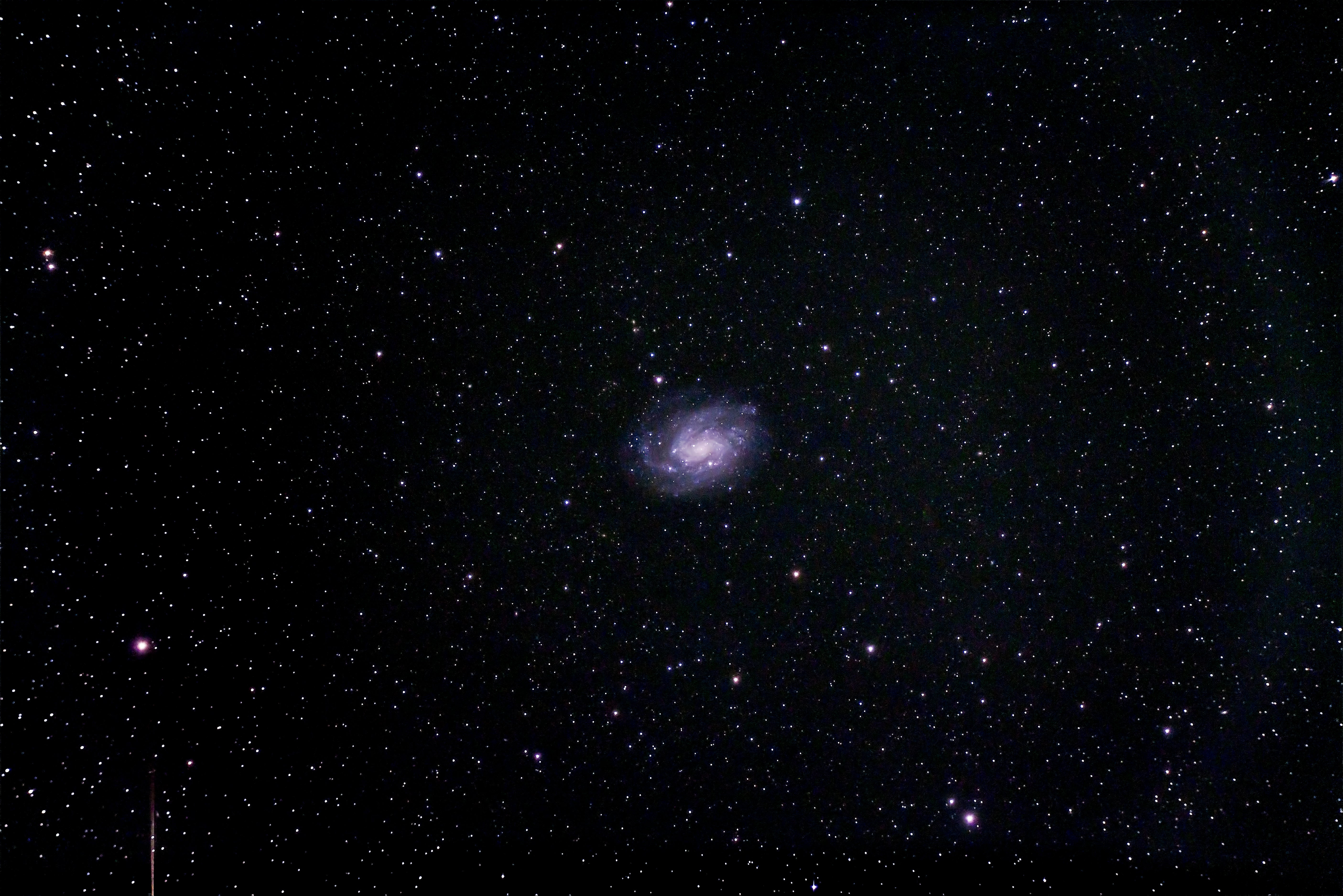
NGC 300 is a neighbor of the Sculptor Dwarf, located about 4° to its south-southwest. Its distance is just over 6 million light-years, putting it just outside our Local Group. Some astronomers consider it a member of the Sculptor Group, the closest galaxy group beyond the Local Group. Others put it somewhere between these groups. It is thought to be gravitationally bound to NGC 55, a bright, large SB-type edge-on galaxy 8° west.
The galaxy is a spiral with a less distinct central hub than Edwin Hubble’s Sc class. It is an Sd — usually designated SAd. (The A indicates it’s a normal spiral rather than barred, or SB.) Its diameter is 94,000 light-years, a bit smaller than the Milky Way. It has tightly wound spiral arms with an overall blue color typical of this type of galaxy. Most of its HII regions are located in the inner half of the galaxy’s diameter, but the most massive lies at the terminus of one arm.
NGC 300 is magnitude 8.3 and 20′ by 13′ in size. If you have a good view of objects at a declination of –37°, it’s a nice binocular object. For many observers, it is either very low or never rises above the horizon. This galaxy is reminiscent of M33 in Triangulum, a class SAcd with a slightly more distinct core. Observers at latitudes between the Tropic of Cancer and the Tropic of Capricorn may be able to make comparisons the same night, since the two galaxies have similar right ascensions.
NGC 300 has produced bright events that didn’t fit the profiles of either supernovae or regular novae. This galaxy is one worth monitoring for other stellar outbursts.









